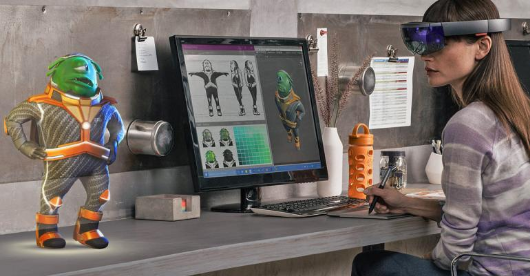We live in a wonderful time that has great technological artifacts that go beyond anything our ancestors could have imagined. We use gadgets that look like something out of a science fiction novel, and we enjoy a higher standard of living than the ancient kings and emperors.

Some of those wonders that once could only be seen in movies is virtual reality and augmented reality. 20 years ago, when Matrix was released, they were a dream. Today they are a reality, and it is impossible to talk about modern technology without mentioning VR and AR.
In the last two years we have seen great advances in this field, making the VR helmets and AR gadgets cheaper and more accessible. Every day more people buy gadgets of this type.
However, there is much to talk about how AR and VR are changing the user experience and why web designers and mobile app developers should keep this in mind if they do not want to be left behind.
Switching to first person designs
Today, the presence of VR has radically changed the user’s perspective. Right now books, movies and mobile apps are produced as a third-person experience, as there is a distance between you and the device.
But if we involve VR, the user becomes part of the experience and immerses him in a new world. Here are some tips to keep in mind for VR and AR developers:
1) Make sure that the content size is reasonable and is determined by the distance between the user and the content.
2) The objective of VR is to provide experiences that are indistinguishable from reality. Do everything possible to prevent it from appearing artificial.
3) Use a reference point, such as a dashboard or a horizon line that remains stable while the user moves on.
Leaving space for interactions
Remember that one of the main purposes of augmented reality is to reduce the general cognitive load, or rather, to make a task simpler. The simplest example of this is when users can display an object in their current environment.
Imagine you want to buy a new sofa but you have no idea how to fit it in the current configuration of your home. Using AR, the manufacturer of the table can show you the table in the current configuration, avoiding any possible refund for discontent.
This same principle applies with clothes and all kinds of products.
Reduce the interaction cost
Another important feature of AR technology in the context of UX design is the reduction in the cost of interaction. Think of that cost as a sum of efforts made by the user to achieve a goal. AR technology allows you to substantially reduce this cost and facilitate your tasks.
For example, if you want to try on a new suit in a store, you have to take off your current clothes and try on the new one, which is very tedious, unless you are the kind of person who is able to spend 5 or 6 hours from store to store.
AR makes it possible for the user to stand in front of a mirror and can choose between different outfits and show them immediately, without needing to take off or put on clothes.
Conclusion
In short, the most important thing is to understand that both VR and AR are becoming increasingly popular and important, and before long, it will be mandatory for every UX designer or app developer to take them into account.
The faster you learn to use AR and VR, the better for you.
About the author:
Manoj Rawat, a Growth Hacker, Ideator, Innovator and Experienced SEO, SMM and Marketing Consultant with over 8 years IT experience. Currently working with a free project management tools platform specifically designed for project managers. He loves to share marketing tips & strategies among online marketers. He is an avid sports person, traveller, explorer & nature lover. You can find Manoj on Quora, LinkedIn and Twitter.


